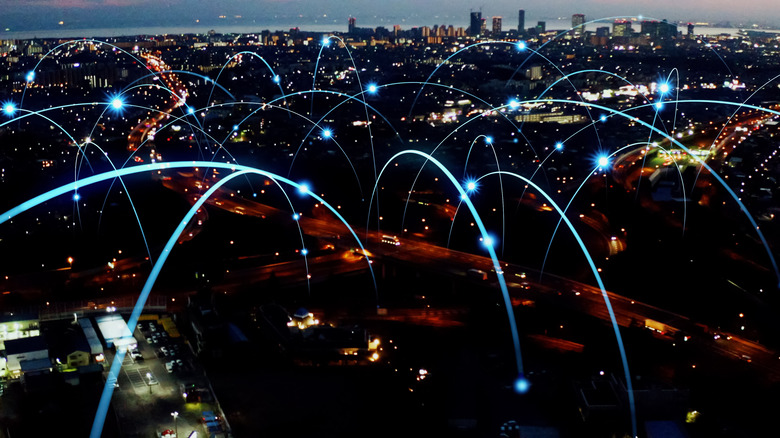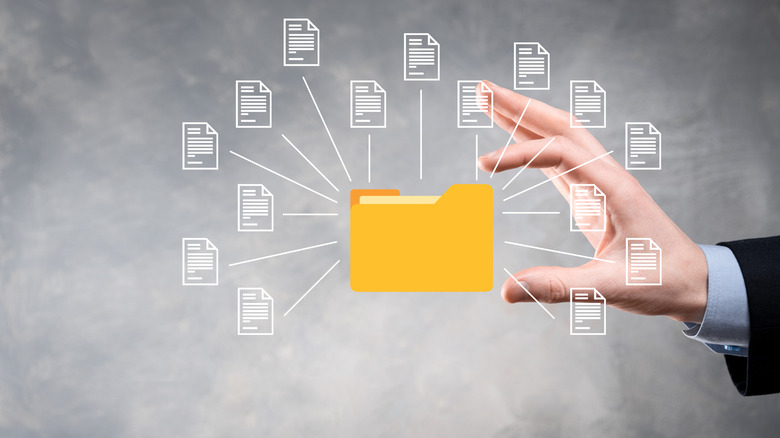Intranet Vs Internet: What's The Difference?
If you're here, you're familiar with the internet. You've probably also heard of an intranet, and you might even belong to one. What, exactly, is the difference? The quick answer is that the internet is the whole thing, the global network of computers sharing information worldwide. An intranet is also a computer network for sharing data, but it's blocked off with security measures that grant access only to certain approved users.
Most intranets are administered by employers for the use of employees, hosting data the employer would rather not share with the digital-enabled world. An intranet can serve any number of purposes but is most often implemented as a tool for coworkers to collaborate and share information without worrying about security or being bothered by unwelcome distractions. That's just the basics, though, and the differences between the internet and intranet go beyond their basic structure into who uses them, what value they deliver, and how they work.
What is the internet?
In 1989, a computer scientist named Tim Berners-Lee made a proposal to CERN, the Swiss particle physics center now best known for hosting the Large Hadron Collider. In it, he said the following: "We should work toward a universal linked information system, in which generality and portability are more important than fancy graphics techniques and complex extra facilities. The aim would be to allow a place to be found for any information or reference which one felt was important, and a way of finding it afterwards."
Fast-forward 33 years and Tim Berners-Lee has a shiny knighthood to show for his brainstorm, and his definition still stands: the internet is a place for people to publish any information or reference they consider important so they — or anyone else — can find it afterward. The defining characteristic of the internet is size. At any given time, billions of computers and millions of people are accessing the internet. If your machine is tethered with an ethernet cable, connected to a Wi-Fi signal, or linked with a cellular network, you're probably on the internet.
What is an intranet?
Internet users have long been worried about data security. Everybody's onboard for free and equal access to digital information until that information is their bank details, company secrets, or intimate chats with their partner. Creating any ethical data network requires balancing two important, contradictory concerns: access and privacy. The simplest answer to that complicated question is to set up a limited network where approved people can access approved sets of data and strong security excludes unwelcome visitors. That's an intranet.
In many ways, intranets are older than the internet. There were limited digital filesharing systems long before Berners-Lee and other programmers made the modern internet available to everyone. Per the Computer History Museum, ARPANET, the filesharing network used by the U.S. Department of Defense's Advanced Research Project Association, transmitted its first packets in 1970 through the Network Control Protocol, long before the CERN proposal in 1989. The 1970s and 1980s saw similar security-minded interests create limited data-transfer networks worldwide.
All would fall under the modern definition of "intranet," as they shared information digitally and strictly limited who had access. You might be on an intranet right now. If so, you probably had to enter a password or scan something at an access point before you could get online. That's the intranet doing its job.
Availability
A LAN is a computer network of machines in the same room. An intranet is a computer network of machines belonging to the same organization, such as a law firm or university. The internet is the computer network of machines on the same planet — in fact, counting satellites, the internet makes it off the planet and into orbit. That's the defining characteristic of the internet: information on the internet is widely available.
Availability is also the defining characteristic of an intranet. Most private individuals and organizations have data they'd like to share within their network but would rather not have random strangers peruse whenever they want. Intranets use the same networking tools and protocols as the internet, but the data hosted on an intranet is available only to people credentialed by the administrator. To prevent private information on an intranet from leaking onto the global internet, administrators set up firewalls, which are technological barriers preventing unwelcome access to proprietary information. Unlike the internet, which is public, intranets are private.
Purpose
"What is the purpose of the internet?" is a question beyond the scope of this article. The internet has lots of purposes. That said, those purposes do generally fall under the heading of data transfer. When an internet-enabled person wants to know about something, their starting point might be Google or Wikipedia or right here at SlashGear, but it will consistently be an internet-based resource available to the public at large. The same is true of other classic internet applications like social media and gaming — it all comes back to making data available to lots of computers at once.
Intranets, by contrast, often have an entirely different purpose. It would be easy to view an intranet as just a smaller, more limited internet, a mechanism for data transfer with restrictions on what data goes to which users. That's accurate but reductive. The main purpose of most intranets is collaboration (via Axero). Rather than simply storing information securely, an intranet also organizes its information for the convenience of its users, who are most often members of a team working toward a goal. A university may, for example, have an intranet only available to its employees.
Security
Data security — and the failures of data security — have defined the 21st century. In 2017, Equifax infamously fumbled the banking information of 147 million people into the public marketplace. Hackers pulled 40 million credit card numbers off Target point-of-sale machines in 2013. Clearly, data security isn't simple and big money or a big name is no guarantee of safety. The purpose of an intranet is to prevent the mistakes that lead to that kind of data loss. By limiting both the data available and the people who have access, intranets create networks that are as secure as their tools allow. Intranets cut off many of the opportunities that bad actors exploit to obtain illicit data.
The internet exists to share data. To a degree, every internet-enabled person accepts a certain level of data vulnerability in order to access information. Certainly, many browsers provide tools to make internet use safer, but past a certain point, being able to access information means being able to access bad information. As long as data security is imperfect, there will never be an unscalable wall on the internet between information people want to share and information they'd like to keep private.





